
In this simulation the learner will design a sequence of experiments to
generate a coronavirus vaccine.
- Subject:
- Biology
- Science
- Material Type:
- Unit of Study
- Provider:
- LabXchange
- Provider Set:
- LabXchange Simulations
- Date Added:
- 10/25/2023

In this simulation the learner will design a sequence of experiments to
generate a coronavirus vaccine.
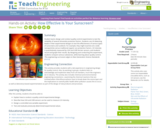
Student teams design and conduct quality-control experiments to test the reliability of several ultraviolet protection factors. Students use UV-detecting beads in their experimental designs to test the effectiveness of various types of sunscreens and sunblock. For example, they might examine zinc oxide nanoparticles versus traditional organic sun protection factors. UV intensity is quantitatively measured by UVA and UVB Vernier sensors, and students record and graph their results. By designing and conducting this experiment, students compare various substances, while learning about quality control.
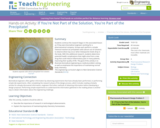
Students continue the research begun in the associated lesson as if they were biomedical engineers working for a pharmaceutical company. Groups each perform a simple chemical reaction (to precipitate solid calcium out of solution) to observe what may occur when Osteopontin levels drop in the body. With this additional research, students determine potential health complications that might arise from a new drug that could reduce inflammatory pain in many patients, improving their quality of life. The goal of this activity is to illustrate biomedical engineering as medical problem solving, as well as emphasize the importance of maintaining normal body chemistry.

Listen and learn about Arrhenius acid-base reactions while exploring mixtures, solutions, and their reactions. Examine the photos of the examples discussed in this website and discover how arrhenius acid-base reactions occur.

This pathway provides an introduction to the scientific method in the context of the life sciences.
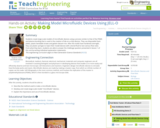
Students create large-scale models of microfluidic devices using a process similar to that of the PDMS and plasma bonding that is used in the creation of lab-on-a-chip devices. They use disposable foam plates, plastic bendable straws and gelatin dessert mix. After the molds have hardened overnight, they use plastic syringes to inject their model devices with colored fluid to test various flow rates. From what they learn, students are able to answer the challenge question presented in lesson 1 of this unit by writing individual explanation statements.

Discusses how to make a reasonable prediction of how many times a spinner will land on a given symbol when you spin a few hundred times. [5:05]
Khan Academy learning modules include a Community space where users can ask questions and seek help from community members. Educators should consult with their Technology administrators to determine the use of Khan Academy learning modules in their classroom. Please review materials from external sites before sharing with students.
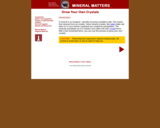
Here are step-by-step instructions on how to create crystals. This is a great experiment for students to use in learning about the structure and formation of crystals.

NASA's Johnson Space Center is located near Houston, Texas and was constructed as "the primary center for: design, development testing of spacecraft and associated systems for human flight; selection and training of astronauts; planning and conducting human space flight missions; and extensive participation in the medical, engineering scientific experiments carried aboard space flights."

This lesson plan allows students to make a rocket with card stock paper. Students will be able to launch the rocket and then discuss the variables affecting the height of each launch.
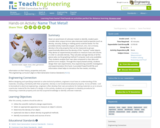
Given an assortment of unknown metals to identify, student pairs consider what unique intrinsic (aka intensive) metal properties (such as density, viscosity, boiling or melting point) could be tested. For the provided activity materials (copper, aluminum, zinc, iron or brass), density is the only property that can be measured so groups experimentally determine the density of the "mystery" metal objects. They devise an experimental procedure to measure mass and volume in order to calculate density. They calculate average density of all the pieces (also via the graphing method if computer tools area available). Then students analyze their own data compared to class data and perform error analysis. Through this inquiry-based activity, students design their own experiments, thus experiencing scientific investigation and experimentation first hand. A provided PowerPoint(TM) file and information sheet helps to introduce the five metals, including information on their history, properties and uses.

Identify simple principles of physical science and engineering by exploring ramps and things that roll. Predict which items will slide or roll down a ramp and test your predictions.

Practice the scientific steps of making predictions, observations, and discoveries while making this simple meringue recipe.

Construct a device to measure the height of a bounced ball, then compare the bouncing heights of various types of balls. Record the results on a chart.
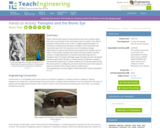
Vision is the primary sense of many animals and much is known about how vision is processed in the mammalian nervous system. One distinct property of the primary visual cortex is a highly organized pattern of sensitivity to location and orientation of objects in the visual field. But how did we learn this? An important tool is the ability to design experiments to map out the structure and response of a system such as vision. In this activity, students learn about the visual system and then conduct a model experiment to map the visual field response of a Panoptes robot. (In Greek mythology, Argus Panoptes was the "all-seeing" watchman giant with 100 eyes.) A simple activity modification enables a true black box experiment, in which students do not directly observe how the visual system is configured, and must match the input to the output in order to reconstruct the unseen system inside the box.

Students will learn what causes reactions and what affects the rates of reaction through data collected by conducting several simulated experiments.

Problem set tests understanding of Photosynthesis by providing multiple choice questions accompanied by related tutorials. Set 2 Focuses on carbohydrate synthesis.

In a class demonstration, the teacher places different pill types ("chalk" pill, gel pill, and gel tablet) into separate glass beakers of vinegar, representing human stomach acid. After 20-30 minutes, the pills dissolve. Students observe which dissolve the fastest, and discuss the remnants of the various pills. What they learn contributes to their ongoing objective to answer the challenge question presented in lesson 1 of this unit.
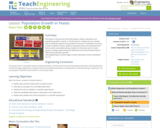
This lesson is the second of two that explore cellular respiration and population growth in yeasts. In the first lesson, students set up a simple way to indirectly observe and quantify the amount of respiration occurring in yeast-molasses cultures. Based on questions that arose during the first lesson and its associated activity, in this lesson students work in small groups to design experiments that will determine how environmental factors affect yeast population growth.
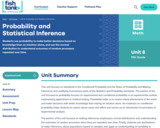
Students use probability to make better decisions based on knowledge than on intuition alone, and use the normal distribution to understand outcomes of random processes repeated over time.